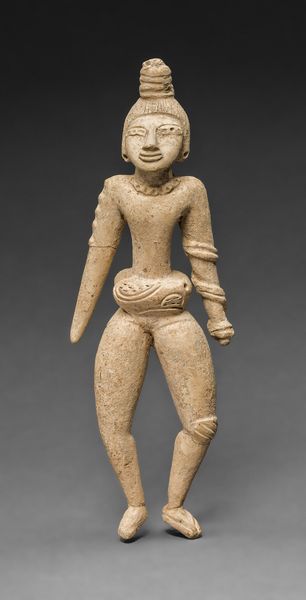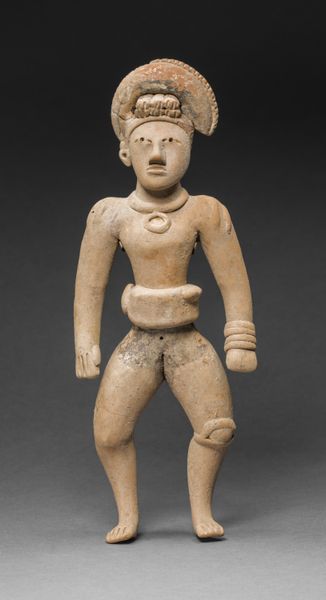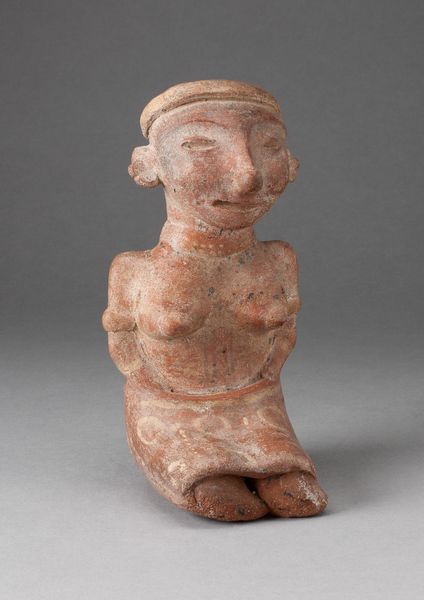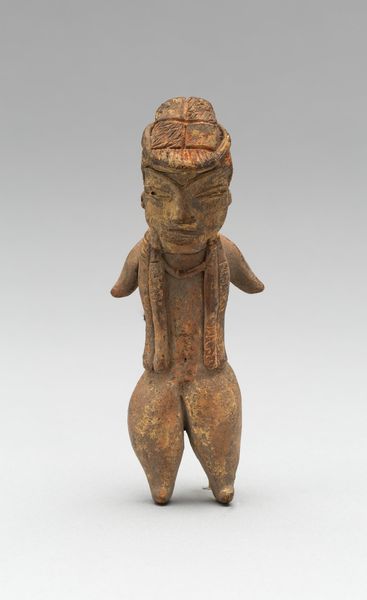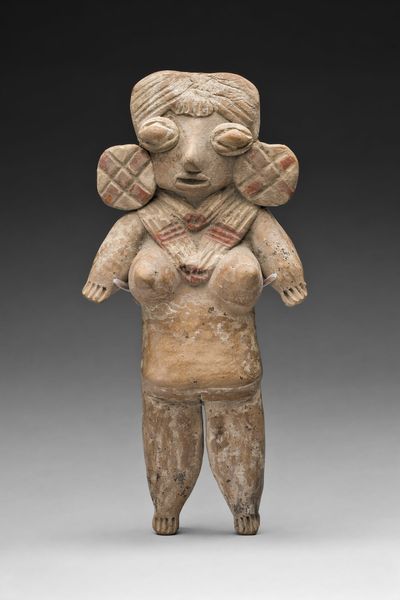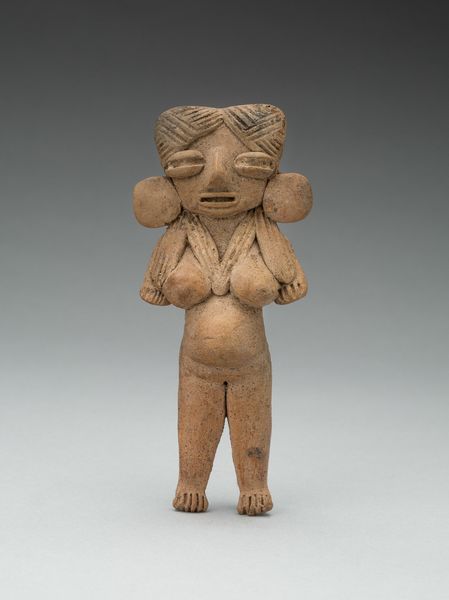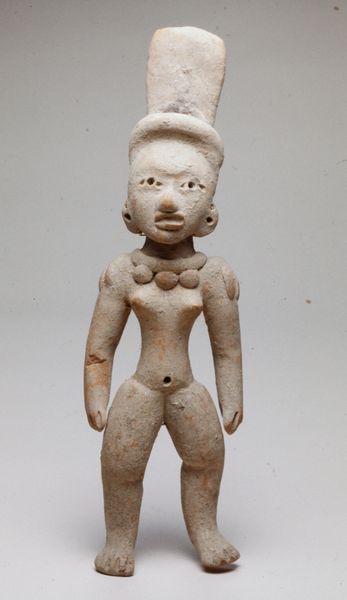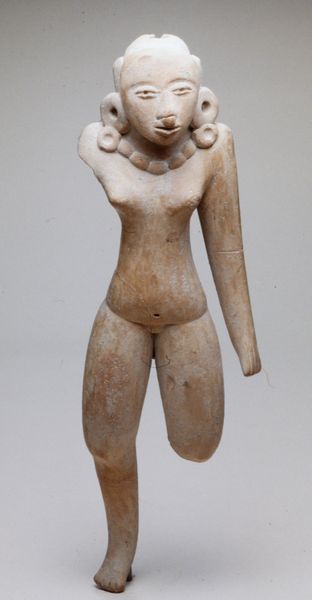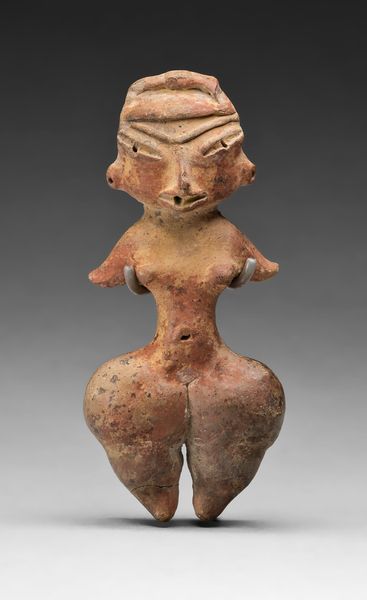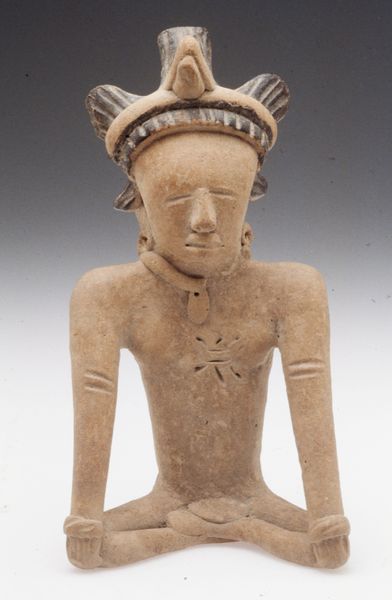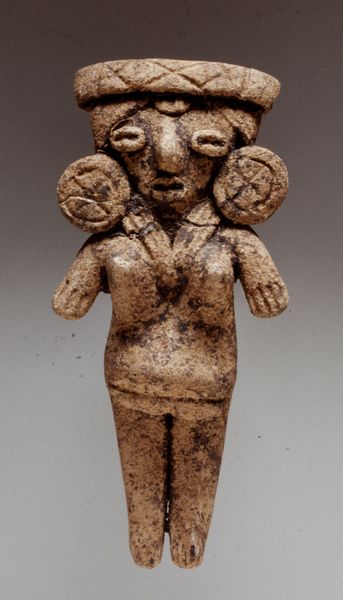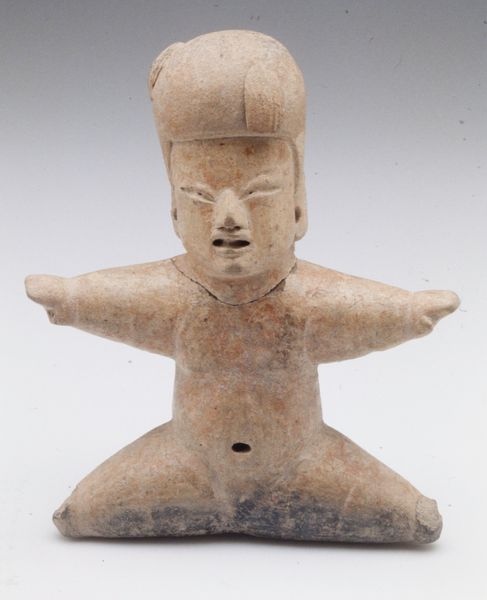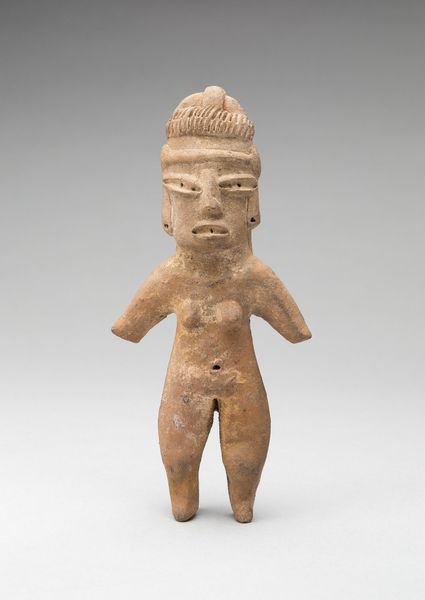
ceramic, sculpture, terracotta
#
ceramic
#
figuration
#
sculpture
#
terracotta
#
indigenous-americas
Dimensions: H. 24.5 cm (9 5/8 in.)
Copyright: Public Domain
Editor: Wow, this little sculpture has presence. Her posture is so self-assured. I mean, she knows her power, right? Curator: Indeed. This is a ceramic figure, often referred to as a "Female Figurine," possibly created between 800 and 1400 by artists in Veracruz, during the Classic period of Mesoamerican history. It is now housed here at the Art Institute of Chicago. Editor: What gets me are those tiny seed-like arms against the almost overflowing largesse of her hips and thighs. She is grounded and rooted and fertile! Is it me or are the body proportions way outside a modern sense of harmony? Curator: Precisely. The accentuated hips and thighs, and the small hands and feet can hold layered symbolic meaning. These choices relate to fertility, motherhood, and her life-giving power and also relate to the cycles of life, death, and rebirth that structured Classic Veracruz cosmology. Editor: It's really humbling, actually. She reminds me that our perspectives on beauty and the body are so time-bound, right? So, these cultural specificities allow for alternative constructions of the female form. Curator: Yes. Think about how adornment functions here. Note the elaborate headdress and the necklace composed of bulbous beads. These objects underscore that her status may have held specific cultural meaning. Clothing may have been another form of communicating status. This can also tell us a lot about trade and economic exchange across ancient Americas. Editor: Her eyes. Did the artists intend to make them a focal point for reflection and perhaps spiritual insight? They draw you in; they convey that she might not only know her power, but yours too. Curator: Perhaps. Many Mesoamerican cultures regarded certain materials as sacred due to their inherent properties. By crafting the figurine from ceramic and carefully depicting certain attributes of womanhood, the artists evoked enduring, culturally specific associations. Editor: It is fascinating to view artifacts from a culture so geographically distant from our everyday life in modern America. She calls us to reconsider notions of power and purpose and to broaden our notions of representation and form. Curator: An excellent point. Ultimately, works like this are cultural memory manifested through material, and they urge us to consider alternative viewpoints that transcend our moment in history.
Comments
No comments
Be the first to comment and join the conversation on the ultimate creative platform.
